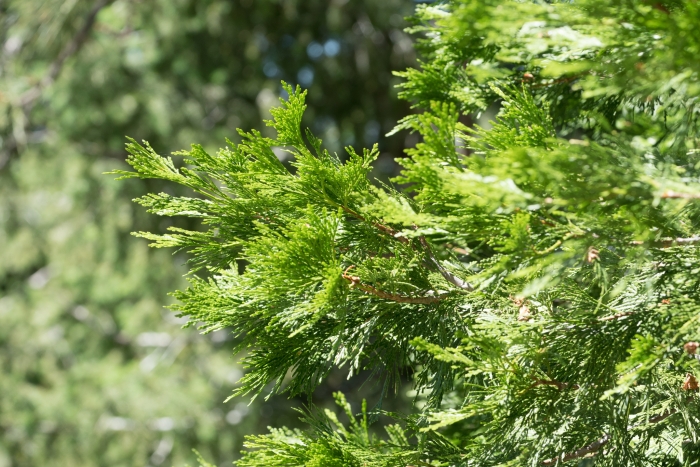Incense Cedar
(Calocedrus decurrens)
Incense Cedar (Calocedrus decurrens)
/
/

Jesse Rorabaugh
Public Domain

























































































































Estimated Native Range
Summary
Incense Cedar is valued for its columnar form, evergreen foliage, and resistance to drought, making it a popular choice for ornamental planting in gardens, parks, and for use in xeriscaping. It is also used in habitat restoration projects. The tree thrives in full sun to part shade and is adaptable to a variety of soil types, though it prefers well-drained soils. It is less suitable for small gardens due to its large size. Potential problems include susceptibility to scale insects and heart rot. Incense Cedar is potentially invasive in some regions outside its native range, so gardeners should check local guidelines before planting.CC BY-SA 4.0
Plant Description
- Plant Type: Tree
- Height: 70-100 feet
- Width: 8-10 feet
- Growth Rate: Slow
- Flower Color: N/A
- Flowering Season: Non-Flowering
- Leaf Retention: Evergreen
Growth Requirements
- Sun: Full Sun, Part Shade
- Water: Low
- Drainage: Fast, Medium, Slow
Common Uses
Bird Garden, Border Plant, Deer Resistant, Drought Tolerant, Fragrant, Low Maintenance, Potted Plant, Salt Tolerant, Street Planting
Natural Habitat
Mixed coniferous forests from Oregon to Baja California, and eastward to western Nevada
Other Names
Common Names: Bastard Cedar , California Incense Cedar , Californian Post Cedar , White Cedar , Fluß-Zeder , Kalifornische Weirauchzeder , Cedro Incienso , Cedro Bastardo , Arbre À Encens , Calocèdre À Encens
Scientific Names: Calocedrus decurrens , Libocedrus decurrens , Heyderia decurrens , Libocedrus decurrens f. aureovariegata , Libocedrus decurrens f. compacta , Libocedrus decurrens f. glauca , Libocedrus decurrens var. aureovariegata , Libocedrus decurrens var. compacta , Libocedrus decurrens var. glauca , Thuja craigana
GBIF Accepted Name: Calocedrus decurrens (Torr.) Florin